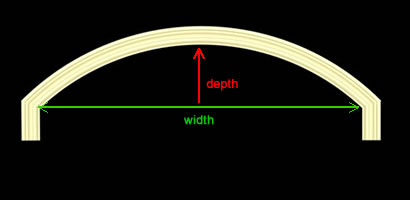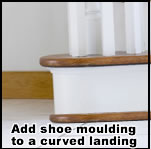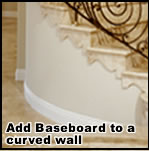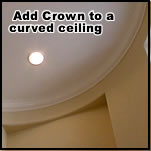How to order
Click the
Start the process by selecting the moulding style (item number) from the online catalog ![]() .
.
Click the item's picture to start the ordering process.
When ordering we may need to know :
- Paint Grade or Stain Grade?
- What is the application?
- How long and how many?
Confused? Don't worry, just click the picture of the moulding style you want and the Step by Step Ordering wizard will walk you through the process.
Moulding Style
Choosing the moulding style
Start by searching our online catalog of over 7000 moulding styles. Our online catalog is a searchable database of all our mouldings complete with pictures, full scale drawings and pricing information.
In most situations the curved flexible moulding will be used near or in conjunction with straight lengths of moulding. Although flexible moulding is much less expensive than curved wood moulding, it is much more expensive than straight wood moulding. We suggest that you choose a locally available wood moulding for use in the straight sections and a matching flexible moulding for the curved areas. Due to the high cost of shipping lengths of wood moulding, Trimster does not currently offer matching wood mouldings to their line of flexible mouldings.
See "Searching the Moulding Catalog" for tips on how to locate a match to your wood trim
When choosing a moulding style be sure to select one that is available in the wood grain pattern (species) desired. See "Selecting the Species" for more information.
Precautions:
Not all mouldings are available in all species. See the online catalog for availability
The most common species in order of availability are:
- Smooth Paint Grade
- Pine Stain Grade
- Oak Stain Grade
- Poplar Stain Grade
- Other
Measuring Required Length
The required length is automatically calculated for full circles, half circles, quarter circles and eyebrow arches.
Half, Full or Quarter circle the formula is :
- Half Circle = RADIUS X 3.14
- Full Circle = RADIUS X 3.14 X 2
- Quarter Circle = RADIUS X 3.14 X .5
Arc Segments, Eyebrows and Ellipticals the formula is:
- Arch RISE X 2 + Arch WIDTH
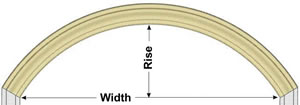
Ovals the formula is:
- Oval WIDTH X 2 + Oval HEIGHT x 2
![]() Round up to the nearest whole foot. There is a 4 foot minimum per length.
Round up to the nearest whole foot. There is a 4 foot minimum per length.
![]() Be sure to include enough material for miters and any reveal.
Be sure to include enough material for miters and any reveal.
Calculating the RADIUS
Click the Radius Tool  for instructions and help calculating the radius of your application
for instructions and help calculating the radius of your application
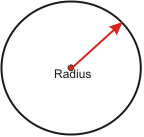
Radius = Distance from the center to the outside of a circle (1/2 the Diameter )
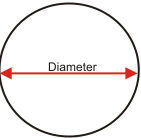
Diameter = Distance accross a circle
( radius X 2)
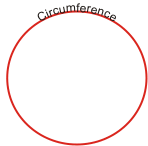
Circumference = Distance around a circle (Diameter X 3.14)


